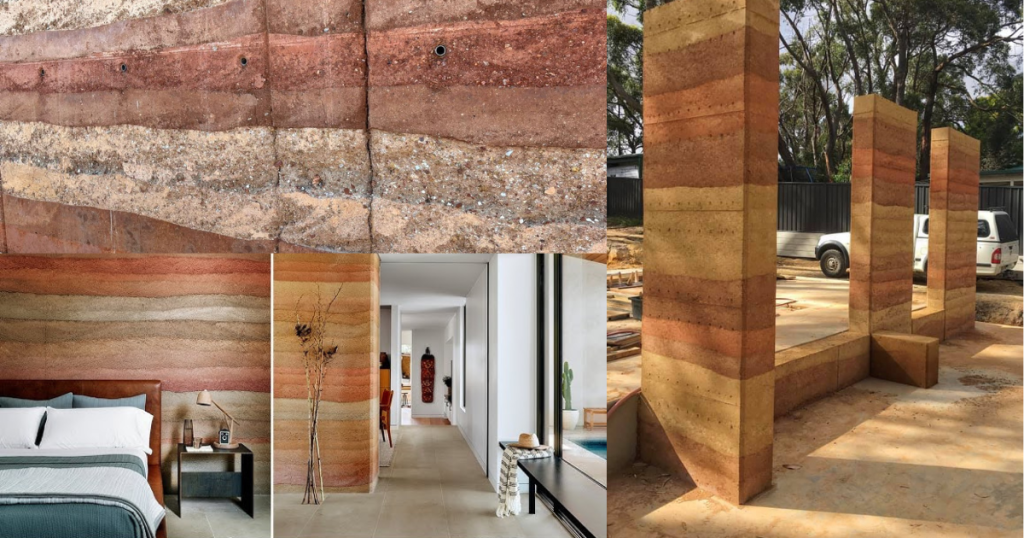Introduction
The Rise of Natural Building Materials In recent years, the construction industry has witnessed a significant shift towards sustainable practices, driven by growing environmental concerns and the need for cost-effective alternatives. The built environment is one of the most pollutive sectors globally, with embodied carbon accounting for 10% of all energy-related CO2 emissions.
Key drivers of the shift to natural building materials:
- Reducing environmental impact
- Lowering construction costs
- Improving energy efficiency
- Enhancing indoor air quality
The search for the cheapest natural building materials has led to a revival of ancient techniques and the development of innovative solutions. These materials offer numerous benefits:
| Benefit | Description |
|---|---|
| Sustainability | Low carbon footprint, renewable, biodegradable |
| Cost-effectiveness | Often locally sourced, reducing transportation costs |
| Energy efficiency | Excellent insulation properties, reducing operational costs |
| Durability | Many natural materials have proven longevity |
As we explore these materials, we’ll see how they can revolutionize construction practices, creating structures that are not only environmentally responsible but also affordable and aesthetically pleasing.
1. Earth-Based Materials
Earth-based materials represent some of the cheapest natural building materials available, offering excellent sustainability and cost-effectiveness.
A. Cob
Cob is an ancient building technique experiencing a renaissance in sustainable construction. Made from subsoil, sand, straw, and sometimes lime, it’s one of the most affordable building materials available.
Key features of cob:
- Zero embodied carbon
- Excellent thermal mass
- Highly sculptural and versatile
- Durable (oldest known cob house dates to the 15th century)

Modern innovations like CobBauge have improved cob’s thermal properties, making it a viable alternative to concrete for low-carbon construction.
B. Rammed Earth
Rammed earth is another ancient technique gaining popularity in contemporary sustainable architecture.

Benefits of rammed earth:
- High thermal mass for energy efficiency
- Durability (structures can last centuries)
- Low maintenance requirements
- Uses locally sourced materials, reducing costs
| Aspect | Comparison to Conventional Materials |
|---|---|
| Lifespan | 100+ years |
| Embodied energy | 30% of concrete |
| CO2 emissions | Significantly lower |
| Recyclability | 100% recyclable |
C. Compressed Earth Blocks (CEB)
CEBs offer a modern take on traditional earth-based construction, providing a sustainable alternative to conventional bricks.

Characteristics of CEBs:
- Low carbon footprint
- Can be produced on-site, reducing transportation costs
- Fire-resistant
- Good thermal and acoustic properties
However, CEBs have lower tensile strength compared to conventional bricks and may lose stability with prolonged water exposure.
2. Plant-Based Materials
Plant-based materials offer renewable and often cost-effective options for sustainable construction.
A. Bamboo
Bamboo is one of the fastest-growing plants in the world, making it a highly renewable resource for construction.
Advantages of bamboo:
- Rapid growth (up to 3 feet per day)
- High strength-to-weight ratio
- Versatile applications in construction
- Biodegradable and easily disposable

Bamboo’s flexibility and abundance make it one of the cheapest natural building materials available in many regions.
Rapid Growth
Bamboo holds the record for the fastest-growing plant on Earth. Some species can grow at an astonishing rate of up to 47.6 inches (120 cm) in a single 24-hour period
This rapid growth makes bamboo a highly renewable resource, reaching maturity in just 3-5 years compared to 10-20 years for most softwoods.
Environmental Benefits
Bamboo is an environmental powerhouse:
- It releases 35% more oxygen than an equivalent stand of trees.
- A bamboo grove can absorb up to 12 tonnes of carbon dioxide per hectare annually.
- It helps prevent soil erosion with its extensive root system.
- Bamboo requires minimal water and no pesticides to grow.
Strength and Versatility
Despite its rapid growth, bamboo boasts impressive mechanical properties:
- It has a tensile strength of 28,000 psi, surpassing mild steel (23,000 psi).
- Some bamboo species have a strength-to-weight ratio equal to or better than steel and lumber.
- It can be used for construction, flooring, textiles, and even as a food source.
Unique Characteristics
- Bamboo is actually a grass, not a tree.
- It rarely flowers, with some species only blooming once every 100 years.
- Bamboo was the first plant to re-green after the atomic blast in Hiroshima in 1945.
Sustainability
Bamboo’s sustainability credentials are impressive:
- It’s biodegradable and compostable.
- Bamboo can be harvested without replanting, as new shoots emerge from the existing root system.
- It’s considered a carbon-neutral plant due to its rapid growth and carbon sequestration abilities.
Cultural Significance
Bamboo has long been used in various cultures:
- In China and India, it has been used to construct suspension bridges for centuries.
- In the Philippines, traditional nipa huts often use bamboo as a primary building material.
- In Japanese architecture, bamboo is used for decorative elements like fencing and fountains.
- Bamboo’s combination of rapid growth, strength, versatility, and environmental benefits
- make it a truly remarkable plant with significant potential for sustainable applications across various industries.
B. Straw Bale
Straw bale construction repurposes agricultural waste into an effective and affordable natural building material.
Benefits of straw bale construction:
- Excellent insulation (R-value of 2.38 per inch)
- Can reduce heating and cooling costs by up to 75%
- Fire-resistant when properly constructed
- Renewable and locally sourced in many areas

C. Cork
Cork is emerging as a sustainable option for various construction applications.

Cork in construction:
- Harvested without harming trees
- Excellent thermal and acoustic properties
- Used for insulation, flooring, and wall coverings
- Naturally fire-resistant and water-resistant
Cork’s unique properties make it a valuable, though not always the cheapest, natural building material for specific applications.
By utilizing these earth-based and plant-based materials, construction projects can significantly reduce costs while minimizing environmental impact. These materials often represent the cheapest natural building materials available, offering a sustainable alternative to conventional construction methods.
3. Recycled and Upcycled Materials
The construction industry is increasingly turning to recycled and upcycled materials as sustainable and cost-effective alternatives to traditional building materials.
A. Reclaimed Wood
Reclaimed wood offers a unique blend of sustainability, aesthetics, and potential cost savings.

Benefits of reclaimed wood:
- Reduces demand for new lumber, preserving forests
- Decreases landfill waste
- Unique aesthetic appeal with rich patina and character
- Potential for lower material costs
Reclaimed wood can be sourced from:
- Demolished buildings
- Old barns and farmhouses
- Deconstructed ships
- Industrial pallets and crates
B. Recycled Steel
Steel is one of the most recycled materials globally, with about 40% of steel production involving recycled content.

Advantages of recycled steel:
- Can be recycled repeatedly without losing strength
- Reduces energy consumption and CO2 emissions
- Versatile applications in structural components
- Potential for complete building recyclability
C. Recycled Plastic and Rubber
Innovative uses of recycled plastic and rubber are emerging in the construction industry.
Applications of recycled plastic:
- Lumber alternatives
- Fencing and decking
- Floor and roof tiles
- Bricks and concrete additives
Rubbercrete:
- Made by replacing fine aggregates in concrete with crumb rubber from used tires
- Reduces landfill waste
- Potential sustainable alternative to traditional concrete
These recycled materials offer significant environmental benefits while often providing cost-effective solutions for construction projects.
4. Innovative Sustainable Materials
The construction industry is witnessing the development of innovative materials that promise to revolutionize sustainable building practices.
A. Mass Timber
Mass timber is gaining popularity as a sustainable alternative to concrete and steel in tall buildings.
Key features of mass timber:
- Made by gluing, doweling, or nailing softer wood pieces together
- Strength comparable to concrete but significantly lighter
- Used in tall buildings (e.g., Mjøstårnet in Norway, 85.4 meters tall)
- Lower carbon footprint than traditional materials

B. Ferrock
Ferrock is an innovative material that offers a sustainable alternative to cement.

Characteristics of Ferrock:
- Made from waste steel dust and silica
- Stronger than concrete
- CO2 negative (absorbs and binds CO2 during curing)
- Environmentally friendly production process
C. Plant-Based Polyurethane Rigid Foam
This sustainable alternative to traditional insulation foam addresses environmental concerns.
Benefits of plant-based foam:
- Made from natural fibers like bamboo and hemp
- Lower carbon footprint than petrochemical-based foams
- Effective insulation properties
- Biodegradable and more easily disposable
These innovative materials demonstrate the potential for sustainable construction to address environmental challenges while meeting performance requirements.
5. Natural Insulation Materials
Insulation plays a crucial role in building energy efficiency, and natural materials offer sustainable alternatives to traditional options.
A. Sheep’s Wool
Sheep’s wool is gaining recognition as an effective and eco-friendly insulation material.
Properties of sheep’s wool insulation:
- Excellent thermal and acoustic insulation
- Moisture-regulating capabilities
- Air purification benefits
- Renewable and biodegradable
B. Recycled Materials for Insulation
Various recycled materials are being repurposed for insulation, offering cost-effective and sustainable solutions.
Examples of recycled insulation:
- Recycled glass insulation
- Made from post-consumer glass
- Comparable performance to traditional fiberglass insulation
- Reduces landfill waste
- Newspaper wood
- Created by coating sheets of newspaper with glue
- Can be used as a wood substitute
- Versatile and potentially waterproof
- Other recycled options:
- Recycled denim insulation
- Cellulose insulation from recycled paper
- Recycled plastic insulation
These natural and recycled insulation materials offer sustainable alternatives that can help reduce the environmental impact of buildings while maintaining or improving energy efficiency.
Conclusion
The exploration of natural and innovative building materials reveals a wealth of options for creating affordable, sustainable structures. From ancient techniques like cob and rammed earth to cutting-edge innovations like ferrock and plant-based foams, these materials offer numerous benefits:
Summary of benefits:
- Cost-effectiveness
- Lower material costs (e.g., bamboo, straw bales)
- Reduced transportation expenses due to local sourcing
- Potential for DIY construction with materials like cob
- Environmental impact
- Low carbon footprint (some materials like ferrock are even CO2 negative)
- Renewable and biodegradable options (e.g., cork, sheep’s wool)
- Reduced waste through recycling and upcycling (e.g., recycled steel, plastic)
- Performance
- Excellent insulation properties (e.g., straw bale, sheep’s wool)
- Durability and longevity (e.g., rammed earth structures lasting centuries)
- Natural moisture regulation (e.g., cob, clay bricks)
Challenges and considerations:
- Building code compliance for newer materials
- Availability of skilled labor for specialized techniques
- Weather-dependent construction processes for some earth-based materials
- Long-term maintenance requirements for certain natural materials
Future outlook:
The future of natural and sustainable building materials looks promising:
- Increasing adoption in mainstream construction (e.g., mass timber in tall buildings)
- Ongoing research and development of innovative materials like ferrock
- Integration of traditional techniques with modern technologies (e.g., CobBauge)
- Growing consumer demand for sustainable, energy-efficient housing
As the construction industry faces global challenges like climate change and resource depletion, these natural and innovative building materials offer a path towards more sustainable, affordable, and resilient construction practices. By embracing these materials, we can create buildings that not only shelter us but also nurture our connection to the natural world and preserve it for future generations.
The cheapest natural building materials often depend on local availability and specific project requirements. However, materials like bamboo, straw bales, and earth-based options like cob and rammed earth frequently emerge as some of the most cost-effective choices. These materials combine low cost with excellent sustainability profiles, making them attractive options for eco-conscious, budget-friendly construction projects.






